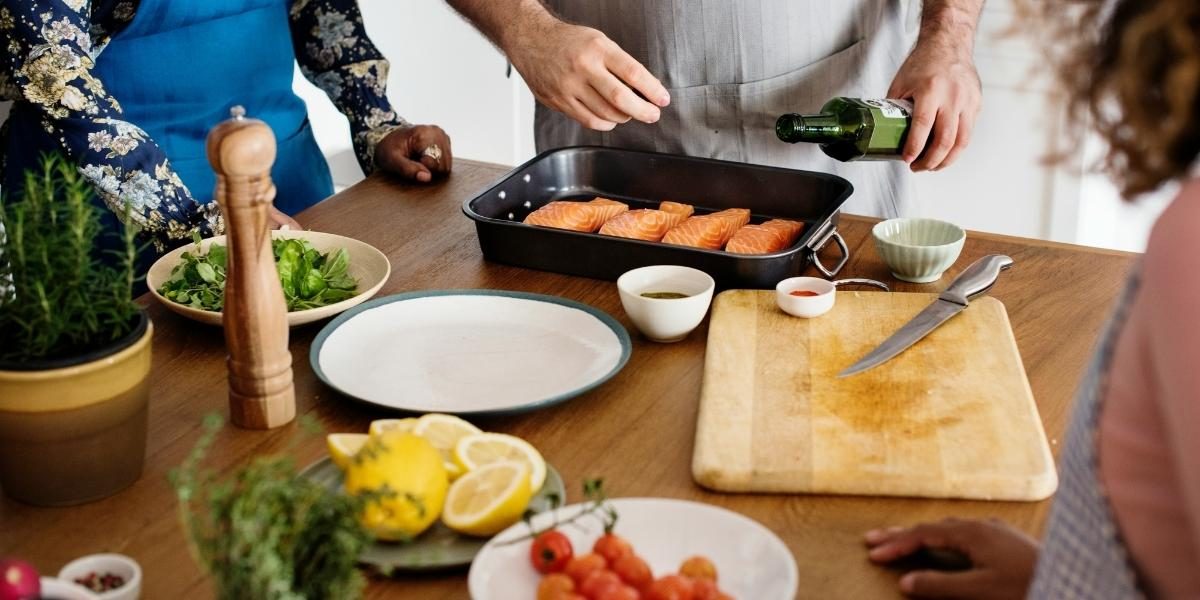Everyone has that special recipe, the one that friends and family rave about, the dish that feels like an extension of your personality. But have you ever thought about turning that signature recipe into a profitable venture? With the rise of the food industry and increasing interest in homemade, artisanal products, the potential to monetize your signature recipe has never been greater. Whether it’s a baked good, sauce, or a dish with a personal twist, there are multiple pathways to transform your culinary passion into a business. This article explores how you can take your kitchen creations from recipe to revenue, offering practical tips and steps for monetizing your culinary talent.
Read Also: Sugar-Free Confections: The Sweet Revolution in Health and Taste
Why Monetize Your Signature Recipe?
Monetizing your signature recipe isn’t just about making money—it’s about sharing your passion with the world and turning something you love into a sustainable business. There’s a growing demand for homemade and small-batch foods, as people move away from mass-produced items in favor of more personal, unique flavors. For many, cooking is not just a hobby, but a lifelong passion that can evolve into a rewarding career.
Taking your signature recipe into the marketplace can also offer an opportunity to gain recognition and build a brand. Whether you dream of opening a food truck, selling at local markets, or launching an online store, there’s no shortage of opportunities for passionate cooks and bakers to capitalize on their culinary skills.
In addition to the personal satisfaction of sharing your cooking with others, monetizing your recipe can provide you with a flexible career that allows you to pursue your passion while supporting your lifestyle. It also offers the possibility of scaling a small business into something much larger over time, turning your home-cooked meal into a potential global brand.
Steps to Monetizing Your Signature Recipe
Monetizing your signature recipe involves several steps, ranging from product development to branding, marketing, and distribution. Here’s a guide to help you turn your delicious creation into a successful product.
Refining Your Recipe
The first step in monetizing your signature recipe is to ensure that it’s scalable and can be produced in larger quantities without compromising quality. Refining your recipe is essential, especially if it’s a product that needs to be mass-produced, packaged, and shipped.
Think about the ingredients you use: Are they readily available? Can they be sourced in bulk at an affordable price? If your recipe involves fresh ingredients, consider whether it can maintain its flavor and quality after being packaged and shipped.
Testing the recipe at different scales is key—make sure it remains just as tasty and authentic when prepared in larger quantities. If you’re looking to sell food items like sauces, jams, or baked goods, consider experimenting with preservatives or natural ways to ensure your product stays fresh for extended periods.
Building a Brand Around Your Recipe
Once you’ve perfected your recipe, the next step is to create a strong brand around your product. Branding is crucial in the food industry, where differentiation is key. Your brand will need to convey your story, your values, and the uniqueness of your food. Ask yourself the following questions:
-
What makes your recipe different from others on the market?
-
What is the story behind your recipe? Is it a family tradition, or did you create it to fill a niche in the food market?
-
What message do you want your brand to communicate to consumers?
Your brand should resonate with potential customers and connect them to your story. Consider creating a logo, packaging design, and slogan that reflect the essence of your recipe. Your branding will play an important role in helping your product stand out on shelves or online.
If you’re selling food locally or online, it’s also important to consider the visual appeal of your product. High-quality packaging and branding can make your product look more professional and increase its perceived value.
Choosing a Sales Model: Online or Local?
Once you have your recipe and branding ready, it’s time to decide where you’ll sell your product. There are two major avenues for selling food products: local and online. Both have their advantages, and the choice depends on your target market and your business goals.
Local Sales
Selling locally can be a great way to test the market and build a following. You can start by offering your product at local farmers’ markets, food festivals, and pop-up events. These venues allow you to directly interact with customers, receive immediate feedback, and create a loyal customer base.
Alternatively, consider approaching local retailers or restaurants to see if they would be interested in carrying your product. Small businesses are often more willing to support local entrepreneurs, and your product may gain traction through these partnerships.
Online Sales
Selling online opens up a larger, more diverse market. Platforms like Etsy, Amazon, and Shopify allow you to sell your food products worldwide. You can also sell directly from your website, enabling you to control your brand and customer experience.
To succeed in online sales, you’ll need to focus on building a robust online presence. Social media platforms like Instagram, Facebook, and TikTok are powerful tools for food entrepreneurs, allowing you to showcase your product, share recipes, and engage with potential customers.
If you decide to sell food online, ensure that your packaging is designed for safe shipping and that it complies with food safety regulations for shipping edible products. Shipping costs and logistics should also be factored into your pricing strategy.
Navigating Legal Requirements and Food Safety
When it comes to food sales, there are specific regulations that must be followed, especially if you plan to sell products that are packaged and shipped. Understanding the legal requirements is critical to avoid fines or issues with compliance. These requirements can vary depending on your location and the type of food product you sell, but common factors to consider include:
-
Food safety certifications: You may need to get your kitchen inspected by local health authorities to ensure that you meet sanitation and food safety standards.
-
Labeling regulations: Packaging must include essential information such as ingredients, nutritional facts, allergens, and expiration dates.
-
Business licenses: To sell food commercially, you’ll need the appropriate licenses. This could be a business license, food establishment permit, or other certifications depending on your local laws.
Consulting with a food lawyer or an expert in food business regulations can help ensure you meet all requirements.
Marketing Your Recipe: Reaching Your Audience
Now that you have your product ready, it’s time to market it to potential customers. Building an effective marketing strategy will help you reach your target audience and grow your business. Here are some strategies to consider:
-
Social Media Marketing: Platforms like Instagram and Facebook are perfect for showcasing your food, sharing recipes, and engaging with your audience. Post high-quality photos, behind-the-scenes shots of your cooking process, and videos of your recipe in action.
-
Influencer Collaborations: Partnering with food influencers or bloggers can help you gain exposure and credibility in the food community. Influencers can create content around your product, reaching new audiences and increasing brand awareness.
-
Storytelling: Consumers today love to support products with a story. Whether it’s a family tradition or a unique inspiration behind your recipe, sharing your story can create a deeper connection with your audience and inspire them to purchase.
Read Also: Oatmeal Cookies with a Twist: Sophia “SJ” Thomas Shares Her Signature Teen-Friendly Recipe
Scaling Your Food Business: From Local to National
Once you’ve built a strong foundation with your signature recipe, you may start thinking about scaling your business. This could involve expanding your production, exploring new distribution channels, or even turning your food business into a national brand. Scaling up requires careful planning and investment, as well as an understanding of logistics, manufacturing, and supply chain management. Additionally, ensuring that you maintain the quality and integrity of your recipe as production increases will be crucial to your success.
Monetizing your signature recipe offers endless opportunities to turn your love for cooking into a profitable and sustainable business. Whether you sell locally, online, or in stores, the journey from kitchen to cash involves refining your product, building a strong brand, navigating legal requirements, and connecting with your audience. With the right approach and determination, your signature recipe can go from a cherished family secret to a thriving business that touches the lives of others.








